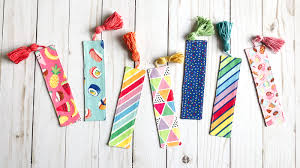Bookmarks are often overlooked yet essential tools for readers around the world. They serve as simple yet effective devices that enhance the reading experience, helping individuals keep their place in a book while also reflecting personal tastes and styles. This article will explore the history, types, cultural significance, and future of bookmarks, illustrating their multifaceted role in the literary landscape.

A Brief History of Bookmarks
The concept of book-marks dates back centuries. Ancient civilizations used various materials to mark their place in scrolls and manuscripts. For instance, the ancient Egyptians employed papyrus strips, while Romans often used leather or fabric. As books evolved from scrolls to codices during the medieval period, the need for a more refined way to mark one’s place became apparent.
By the 16th century, book-marks began to resemble the modern versions we know today. Printed book-marks emerged in tandem with the invention of the printing press, allowing for greater accessibility to literature. They often featured decorative elements or quotes, appealing to the aesthetic sensibilities of readers.
In the 19th century, book-marks became popular promotional tools for publishers and bookstores. Many featured advertisements, illustrations, or literary excerpts, making them valuable marketing items. This trend continues today, with book-marks often serving dual purposes as both functional tools and promotional materials.
Types of Bookmarks
The diversity of book-marks reflects the various preferences and needs of readers. Here are some popular types:
1. Traditional Paper Bookmarks
These are perhaps the most common book-marks, made from paper or cardstock. They come in numerous designs, from simple and minimalist to intricate and artistic. Many independent artists and publishers create unique paper book-marks, often featuring original artwork or quotes from famous literature.
2. Magnetic Bookmarks
Magnetic book-marks have gained popularity for their practicality. They consist of two pieces of magnetized material that fold over the page, ensuring they won’t slip out as easily as traditional paper bookmarks. They come in various designs, often featuring popular characters from books, movies, or cartoons.
3. Fabric Bookmarks
Crafted from cloth or fabric, these book-marks are durable and often handmade. They can be embroidered or printed with beautiful designs, making them both functional and decorative. Fabric book-marks are particularly appealing to those who enjoy sewing or crafting.
4. Leather Bookmarks
For a more luxurious option, leather book-marks provide durability and an elegant aesthetic. They can be embossed with designs or quotes, making them cherished keepsakes. Leather book-marks are often associated with vintage or classic literature, appealing to traditional readers.
5. Digital Bookmarks
In our digital age, e-readers and apps have introduced a new form of book-marks. Digital book-marks allow readers to save their place in e-books and can even sync across devices. While they lack the tactile experience of physical bookmarks, they offer convenience and accessibility.
Cultural Significance
Bookmarks carry cultural significance that extends beyond their practical use. They often reflect the reader’s identity, interests, and values. Here are a few ways book-marks play a role in culture:
1. Personal Expression
Bookmarks can serve as a canvas for self-expression. Many readers choose book-marks that resonate with their personality, featuring favorite quotes, artwork, or themes. This personalization allows readers to curate their reading experiences, making each book feel unique.
2. Cultural Artifacts
In various cultures, book-marks hold historical and artistic significance. For example, in Japan, intricate origami bookmarks are popular, showcasing the skill and artistry of Japanese paper folding. Similarly, book-marks from different regions may reflect local art styles, traditions, and folklore.
3. Literary Communities
Bookmarks often play a role in fostering connections within literary communities. Book clubs and reading groups may create custom book-marks to promote their shared love for literature. Furthermore, literary festivals often distribute book-marks featuring participating authors, serving as both a promotional tool and a memento for attendees.
The Future of Bookmarks
As technology continues to evolve, the future of book-marks raises interesting questions. Will traditional bookmarks become obsolete in the digital age? Or will they adapt and thrive alongside new forms of reading?
1. Hybrid Models
The future may see a combination of physical and digital book-marks. For instance, a physical bookmark might include a QR code linking to an online resource, such as an author interview or a discussion forum about the book. This hybrid approach could enhance the reading experience by connecting readers with broader literary communities.
2. Sustainable Materials
With increasing awareness of environmental issues, there’s a growing trend toward sustainable book-marks. Eco-friendly materials, such as recycled paper or biodegradable options, are becoming more prevalent. This shift aligns with a broader movement in publishing and consumer products towards sustainability.
3. Interactive Bookmarks
Advancements in technology may lead to the development of interactive book-marks. These could include augmented reality features, allowing readers to scan the bookmark with their smartphone and access additional content related to the book. This could range from author interviews to interactive maps of the story’s setting.
4. Personalized Bookmarks
With the rise of print-on-demand services, readers may soon have the option to create personalized book-marks featuring their favorite quotes, images, or even photos. This customization allows readers to carry a piece of their literary journey with them, enhancing the reading experience.
Conclusion
Bookmarks are more than just simple tools for marking pages; they are reflections of personal taste, cultural heritage, and the evolving landscape of reading. From their historical roots to their contemporary forms, bookmarks have adapted alongside literature, enriching the reading experience for countless individuals.
As we look to the future, book-marks will continue to evolve, integrating technology and sustainability while preserving their role as beloved companions in the world of books. Whether you prefer a simple paper bookmark or an intricate leather piece, the next time you pick up a book, take a moment to appreciate the humble yet significant bookmark that helps you navigate your literary journey.











